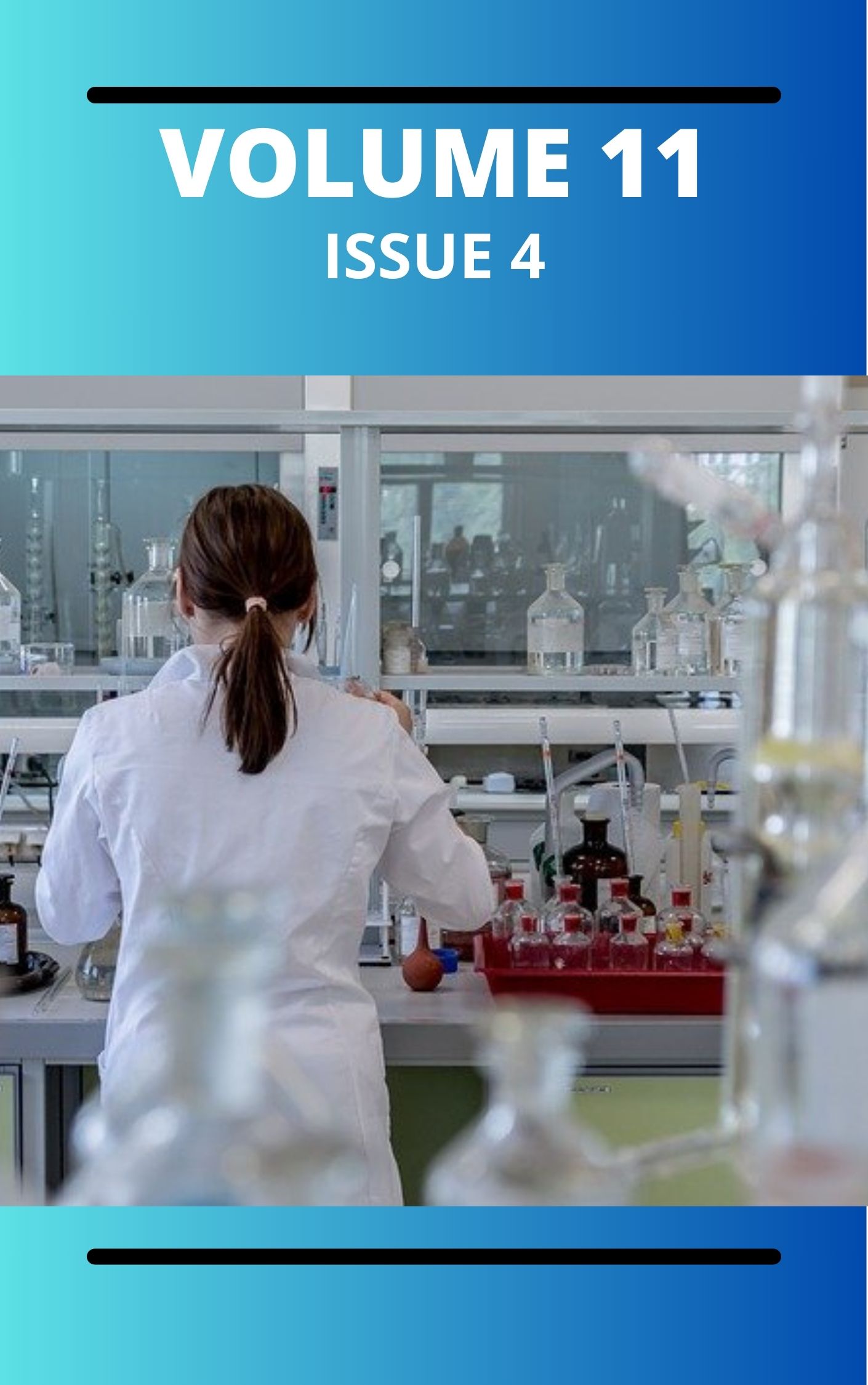Micromorphological and Nutritional Attributes of two Varieties of Vernonia amagdalina Del. Domesticated in Delta State.
DOI:
https://doi.org/10.4314/1ws7v037Keywords:
Micromorphological, nutritional characteristics, Vernonia, amygdalina, Agbor, Ika South, Delta StateAbstract
This study examined the potential of two Vernonia amygdalina varieties (bitter and non-bitter) as sources of nutrients and medicinal compounds. Micromorphological analysis revealed variations in stomata size (bitter: 1.57±0.20 μm; non-bitter: 1.49±0.42 μm), index (bitter: 1.20±0.60%; non-bitter: 2.30±0.21%), and trichome index (bitter: 0.55±0.36%; non-bitter: 0.90±0.19%) between the varieties, while stomata type and anticlinal wall patterns were similar. Both varieties were rich in minerals, with bitter varieties containing higher levels of sodium (7.27±0.43 mg/g), potassium (17.07±0.45 mg/g), phosphorus (3.15±0.41 mg/g), iron (0.65±0.02 mg/g), zinc (0.15±0.03 mg/g), and copper (0.16±0.04 mg/g) compared to non-bitter varieties. Proximate composition analysis showed higher levels of crude fiber (1.76±0.50%), crude protein (21.07±0.30%), and carbohydrate (23.33±0.82%) in non-bitter varieties, while bitter varieties had higher levels of moisture (50.01±0.40%), crude ash (7.95±0.56%), and crude fat (2.15±0.20%). Phytochemical analysis revealed higher levels of tannin (0.13±0.85%), saponin (0.08±0.02%), and flavonoid (0.22±0.09%) in non-bitter varieties, while alkaloid levels (1.26±0.27%) were higher in bitter varieties. These findings suggest that both Vernonia amygdalina varieties are valuable sources of nutrients and phytochemicals, with potential applications in food and medicine.
Downloads
Published
Issue
Section
Similar Articles
- Efe Jessa, Soil Stabilization Using Bio-Enzymes: A Sustainable Alternative to Traditional Methods , Communication In Physical Sciences: Vol. 2 No. 1 (2017): VOLUME 2 ISSUE 1
- Olawale Babatunde Olatinsu, Mathew Osaretin Ogieva, Amidu Abiola Ige-Adeyeye, Investigation of Frequency-dependent Conductivity Signatures of Geological Materials from Ewekoro, Eastern Dahomey Basin , Communication In Physical Sciences: Vol. 12 No. 2 (2025): VOLUME 12 ISSUE 2
- Gideon Wyasu, The influence of natural fermentation, malt addition and soya fortification on the sensory and physio-chemical characteristics of gyok-millet gruel , Communication In Physical Sciences: Vol. 4 No. 1 (2019): VOLUME 4 ISSUE 1
- A. Abdulazeez, N. C. Nwokem, I. I. Ibrahim, A. Uthman, H. L. Zubairu, M. Abubakar, Chemical Information from Proximate and Elemental Composition of Acalypha hispida Leaf , Communication In Physical Sciences: Vol. 5 No. 2 (2020): VOLUME 5 ISSUE 2
- Usoro M. Etesin, Hydrochemical study of shallow ground water in Ikot Abasi Coastal Aquifer , Communication In Physical Sciences: Vol. 7 No. 3 (2021): VOLUME 7 ISSUE 3
- Uzoma Nwokoma Esomchi, , Obinna. Christain. Dinneya, , Chukwunenyoke Amos-Uhegbu, , Solape Simeon Fadeyi, MAGNETIC RESPONSE ANALYSES IN PARTS OF SOUTHERN BENUE TROUGH: IMPLICATIONS FOR MINERAL PROSPECTING , Communication In Physical Sciences: Vol. 12 No. 3 (2025): VOLUME 12 ISSUE 3
- Uduak Aletan, Imaobong Nyambi Akpet, Biochemical Information from the leaves of Pterocarpus mildraedii , Communication In Physical Sciences: Vol. 7 No. 4 (2021): VOLUME 7 ISSUE 4
- Felix B. Fatoye, Yomi B. Gideon, Joseph I. Omada, Maceral Characterization of the Cretaceous Effin – Okai Coal De-posit in Northern Anambra Basin, Nigeria , Communication In Physical Sciences: Vol. 5 No. 3 (2020): VOLUME 5 ISSUE 3
- N. B. Essien, Sorghum Waste as an Efficient Adsorbent for the Removal of Zn2+and Cu2+ from Aqueous Medium , Communication In Physical Sciences: Vol. 5 No. 2 (2020): VOLUME 5 ISSUE 2
- Nwanya, Julius Chigozie, Njoku, Kevin Ndubuisi Chikezie, A New Approach to Solving Transportation Problems: The Middle Cell Method , Communication In Physical Sciences: Vol. 10 No. 3 (2023): VOLUME 10 ISSUE 3 (2023-2024)
You may also start an advanced similarity search for this article.




